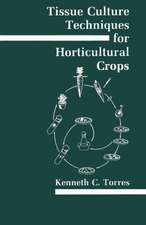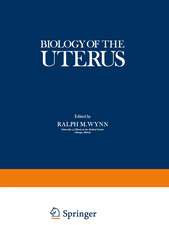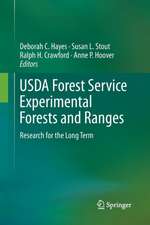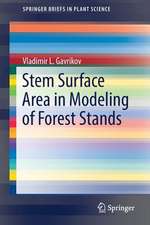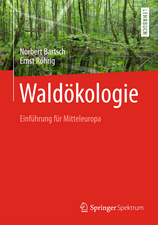Sister Chromatid Exchanges: 25 Years of Experimental Research Part A: The Nature of SCEs: Basic Life Sciences, cartea 29
Editat de Raymond R. Ticeen Limba Engleză Paperback – 17 noi 2012
Din seria Basic Life Sciences
- 5%
 Preț: 378.07 lei
Preț: 378.07 lei - 15%
 Preț: 647.73 lei
Preț: 647.73 lei - 5%
 Preț: 383.55 lei
Preț: 383.55 lei - 15%
 Preț: 649.06 lei
Preț: 649.06 lei -
 Preț: 401.03 lei
Preț: 401.03 lei - 5%
 Preț: 730.71 lei
Preț: 730.71 lei - 5%
 Preț: 736.92 lei
Preț: 736.92 lei - 5%
 Preț: 726.68 lei
Preț: 726.68 lei - 5%
 Preț: 729.26 lei
Preț: 729.26 lei - 18%
 Preț: 960.61 lei
Preț: 960.61 lei - 5%
 Preț: 375.85 lei
Preț: 375.85 lei - 5%
 Preț: 744.05 lei
Preț: 744.05 lei - 5%
 Preț: 740.58 lei
Preț: 740.58 lei - 5%
 Preț: 733.82 lei
Preț: 733.82 lei - 5%
 Preț: 719.38 lei
Preț: 719.38 lei -
 Preț: 397.59 lei
Preț: 397.59 lei - 5%
 Preț: 390.85 lei
Preț: 390.85 lei - 15%
 Preț: 657.57 lei
Preț: 657.57 lei - 5%
 Preț: 382.99 lei
Preț: 382.99 lei - 5%
 Preț: 400.56 lei
Preț: 400.56 lei - 5%
 Preț: 739.69 lei
Preț: 739.69 lei - 15%
 Preț: 657.25 lei
Preț: 657.25 lei - 18%
 Preț: 959.67 lei
Preț: 959.67 lei -
 Preț: 401.24 lei
Preț: 401.24 lei - 5%
 Preț: 387.39 lei
Preț: 387.39 lei - 5%
 Preț: 376.95 lei
Preț: 376.95 lei - 5%
 Preț: 768.39 lei
Preț: 768.39 lei - 5%
 Preț: 735.83 lei
Preț: 735.83 lei - 15%
 Preț: 651.19 lei
Preț: 651.19 lei - 18%
 Preț: 1228.47 lei
Preț: 1228.47 lei - 15%
 Preț: 595.36 lei
Preț: 595.36 lei - 5%
 Preț: 736.39 lei
Preț: 736.39 lei - 5%
 Preț: 730.55 lei
Preț: 730.55 lei - 18%
 Preț: 960.30 lei
Preț: 960.30 lei - 5%
 Preț: 738.93 lei
Preț: 738.93 lei - 15%
 Preț: 662.16 lei
Preț: 662.16 lei - 15%
 Preț: 663.60 lei
Preț: 663.60 lei -
 Preț: 395.25 lei
Preț: 395.25 lei - 5%
 Preț: 739.13 lei
Preț: 739.13 lei - 15%
 Preț: 639.59 lei
Preț: 639.59 lei - 5%
 Preț: 377.52 lei
Preț: 377.52 lei - 5%
 Preț: 721.40 lei
Preț: 721.40 lei - 18%
 Preț: 1241.10 lei
Preț: 1241.10 lei - 18%
 Preț: 1233.69 lei
Preț: 1233.69 lei
Preț: 658.88 lei
Preț vechi: 775.14 lei
-15% Nou
Puncte Express: 988
Preț estimativ în valută:
126.12€ • 137.04$ • 106.01£
126.12€ • 137.04$ • 106.01£
Carte tipărită la comandă
Livrare economică 22 aprilie-06 mai
Preluare comenzi: 021 569.72.76
Specificații
ISBN-13: 9781468448917
ISBN-10: 1468448919
Pagini: 544
Ilustrații: LII, 492 p. 229 illus.
Dimensiuni: 178 x 254 x 29 mm
Greutate: 0.93 kg
Ediția:Softcover reprint of the original 1st ed. 1984
Editura: Springer Us
Colecția Springer
Seria Basic Life Sciences
Locul publicării:New York, NY, United States
ISBN-10: 1468448919
Pagini: 544
Ilustrații: LII, 492 p. 229 illus.
Dimensiuni: 178 x 254 x 29 mm
Greutate: 0.93 kg
Ediția:Softcover reprint of the original 1st ed. 1984
Editura: Springer Us
Colecția Springer
Seria Basic Life Sciences
Locul publicării:New York, NY, United States
Public țintă
ResearchCuprins
of Part A.- Historical Perspective.- A Brief History of the Discovery of Sister Chromatid Exchanges.- Detection, Significance, and Mechanism of Sister Chromatid Exchange Formation: Past Experiments, Current Concepts, Future Challenges.- The Nature of SCEs.- Spontaneous and Halogenated Pyrimidines.- Probing Sister Chromatid Exchange Formation with Halogenated Pyrimidines.- The Replication of Unsubstituted and 5-Bromodeoxyuridineor 5-Chlorodeoxyuridine-Substituted DNA Regulates the Rate of Induction of Sister Chromatid Exchanges.- Indiction of DNA Lesions, Chromosomal Aberrations, and G2 Delay by Bromo- and Chlorodeoxyuridine.- BrdUrd-Independent and BrdUrd-Dependent SCEs as Components of SCE Yields: Implications for Their Cellular Significance.- Ring Chromosomes and Sister Chromatid Exchanges.- Cytogenetic Characterization of the Chinese Hamster Ovary Mutant EM9.- High Induction of Sister Chromatid Exchanges and Chromosome Aberration by 5-Bromodeoxyuridine in a Ethylmethanesulfonate-Sensitive Mouse Lymphoma Cell Mutant (ES 4).- Induction and Characterization of SCEs.- Activated Oxygen Species at the Origin of Sister Chromatid Exchanges.- Induction of Sister Chromatid Exchanges in Split-Dose and Cell-Fusion Experiments.- Thymidylate Stress and Sister Chromatid Exchanges.- Sister Chromatid Exchange and DNA Methylation.- Cell-Stage Dependence of the Formation of SCEs and Chromosomal Aberrations.- Sister Chromatid Exchange (SCE) Induced by Laser-UV- Microirradiation: Correlation Between the Distribution of Photolesions and the Distribution of SCEs.- Persistence of SCE-Inducing Lesions In Vivo: Relevance to Mechanisms of SCE Formation.- DNA Damage Persistence and Site Specificity in SCE Formation.- The Contribution of DNA Single-Strand Breaks to the Formation of Chromosome Aberrations and SCEs.- Replication Bypass SCE Mechanisms and the Induction of SCE by Single-Strand Adducts or Lesions of DNA.- Modulation of SCE Induction.- The Effect of Cell Proliferation, Bromodeoxyuridine Concentration, and Deoxynucleoside Triphosphate Pools on Sister Chromatid Exchange Induction.- Effect of Bromodeoxyuridine on Induced Sister Chromatid Exchanges.- The Mechanism of 3-Aminobenzamide-Mediated Increases in Spontaneous and Induced SCEs.- DNA Repair and Sister Chromatid Exchanges.- Potentiation of Induced Sister Chromatid Exchanges and Chromatid-Type Aberrations by Inhibitors of DNA Synthesis and Repair in G2.- The Action of Anticlastogens on Chemically Induced SCE.- Enchancement of Carcinogen-Induced Chromosome Breakage and Sister Chromatid Exchange by 13-Cis-Retinoic Acid.- Correlations.- The Induction of SCE with Relation to Specific Base Methylation of DNA in Chinese Hamster Cells by N-Methyl-N-nitrosourea and Dimethylsulfate.- Relationships Between Specific DNA Adducts, Mutation, Cell Survival, and SCE Formation.- Interrelationships of SCEs, Mutation at the HGPRT Locus, and Toxicity in Chinese Hamster V79 Cells.- The Induction of Sister Chromatid Exchanges by Environmental Pollutants: Relationship of SCE to Other Measures of Genetic Damage.- The Quantitative Comparison Between SCE and Transformation Frequencies Induced by Chemical Carcinogens in Syrian Hamster Cells.- Quantitative Predictivity of Carcinogenicity for Sister Chromatid Exchanges In Vivo.- Statistical Analysis.- Statistical Design, Analysis, and Inference Issues in Studies Using Sister Chromatid Exchange.- Guidelines for the Statistical Evaluation of SCE.- Statistical Evaluation of Sister Chromatid Exchanges: Refined Method.- Statistical Analysis of High SCE Frequency Cells in Human Lymphocytes.- A Statistical Analysis of Neanthes arenaceodentata, Sister Chromatid Exchange Data.- Participants and Speakers.







